Environmental Professional’s Guide to Lean and Six Sigma: Chapter 2
What Is Lean?
- What is Lean Manufacturing?
- Creating a Lean Culture
- History of Lean Activity
- Lean Tools
- Where to Find More Information on Lean
- Footnotes
- Toolkit Navigation
What is Lean Manufacturing?
The term “Lean,” coined by James Womack, et al. in the 1990 book, The Machine that Changed the World, describes the manufacturing paradigm

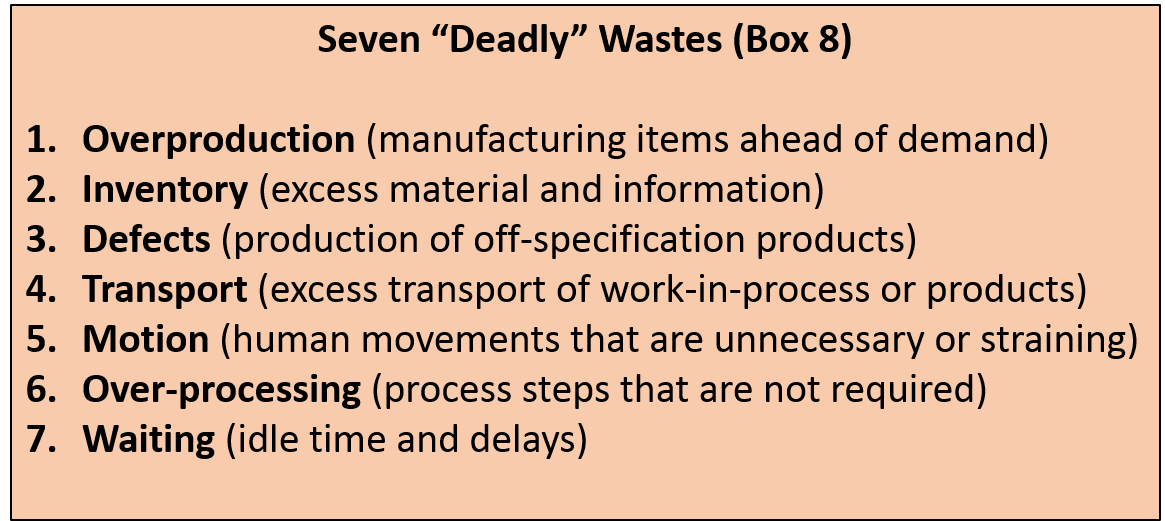
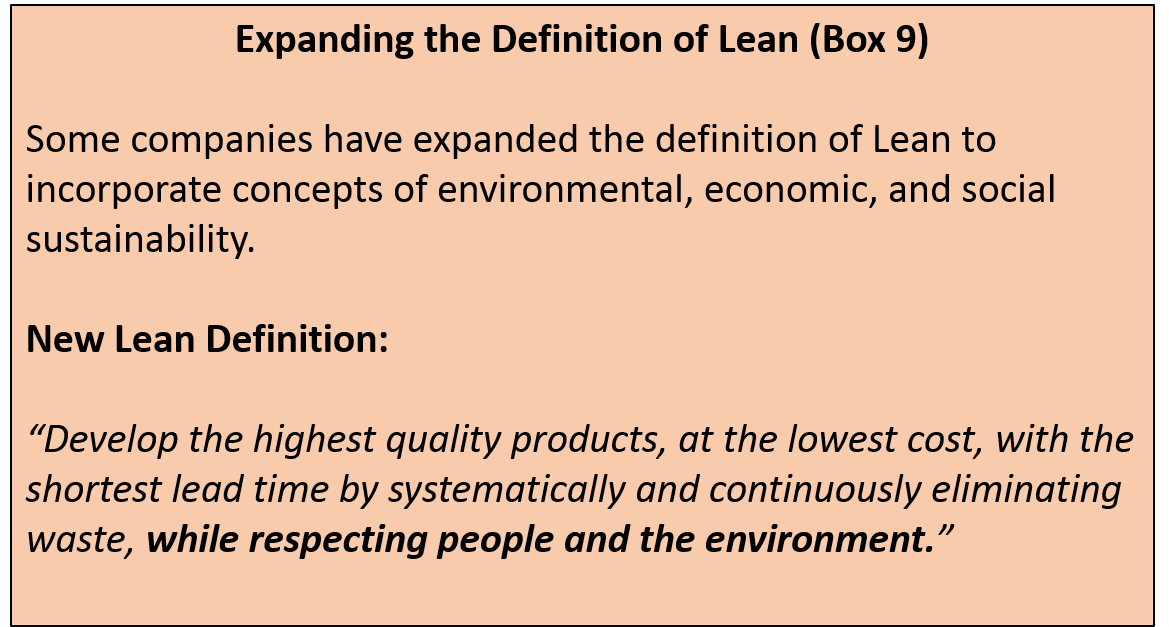
Creating a Lean Culture
Lean manufacturing embodies several important principles as well as a collection of tactical methods for achieving them. These principles and methods effectively engage employees in a continuous improvement culture that naturally encourages waste minimization and pollution prevention. Key Lean principles include:
- Let customers pull value through the enterprise by understanding what the customer wants and producing to meet real demand.
- Pursue perfection by working to continually identify and eliminate non-value added activity (waste) from all processes.
- Involve employees in continual improvement and problem-solving activities.
- Implement a rapid plan-do-check-act improvement framework to achieve results fast and to build momentum (e.g., “try-storming” in kaizen events).
- Use metrics and rapid performance feedback to improve real-time decision-making and problem-solving.
- Approach improvement activities from a whole enterprise or system perspective.
- Emphasize learning at an organizational level through sharing of best practices from one project to another. In Japanese, this is called yokoten.
Lean can be considered a combination of management system (governance), organizational culture, and continual improvement tools (see Figure 2.1).
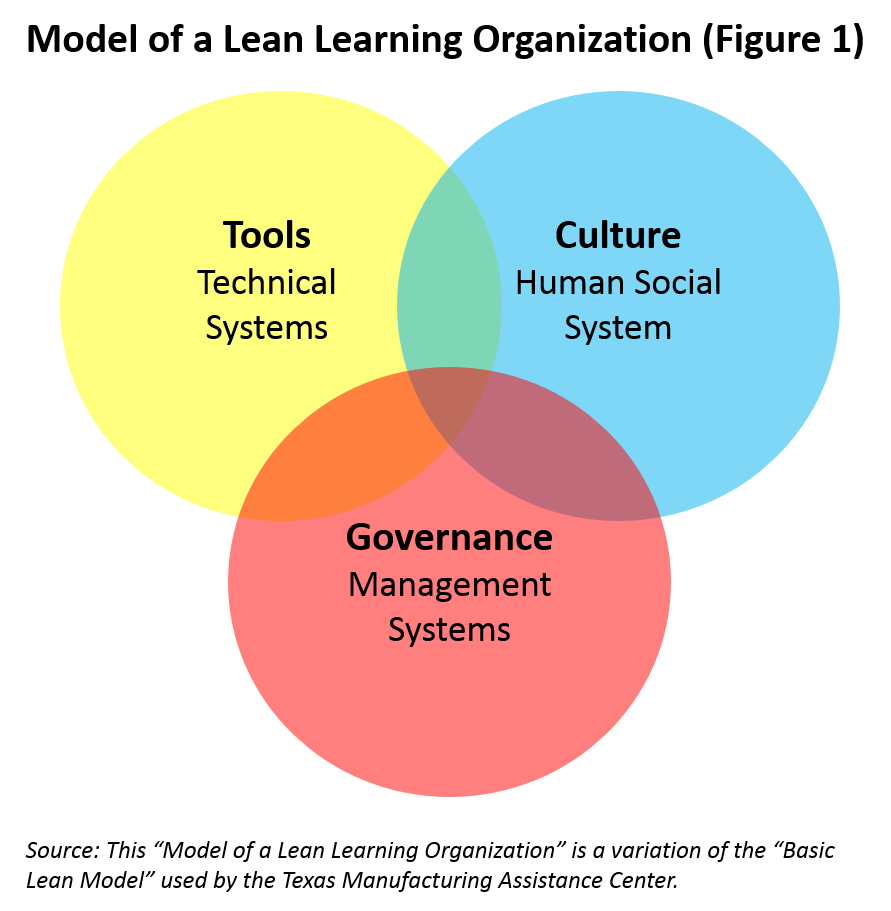
History of Lean Activity
After World War II, the Toyota Motor Company, with the help of Japanese engineers Taiichi Ohno and Shigeo Shingo, pioneered a collection of advanced manufacturing methods that aimed to minimize the resources it takes for a single product to flow through the entire production process. Inspired by concepts developed by Henry Ford in the early 1900s, Toyota created an organizational culture focused on the systematic identification and elimination of all waste from the production process, called the Toyota Production System (TPS).
The TPS “house” (Figure 2) has become a common symbol of Lean. The roof represents the customer-oriented goal of Lean: to provide the highest quality products and services, at the lowest cost, with the shortest lead time. At the core of the “house” is the involvement of all employees in a culture of continual improvement. The pillars are just-in-time production and jidoka (built in quality), while the foundation is standardization. The individual tools and terms listed in the TPS house are defined below and in Appendix C.
Toyota’s success has led thousands of other companies across numerous industry sectors to tailor these advanced production methods to address their operations.
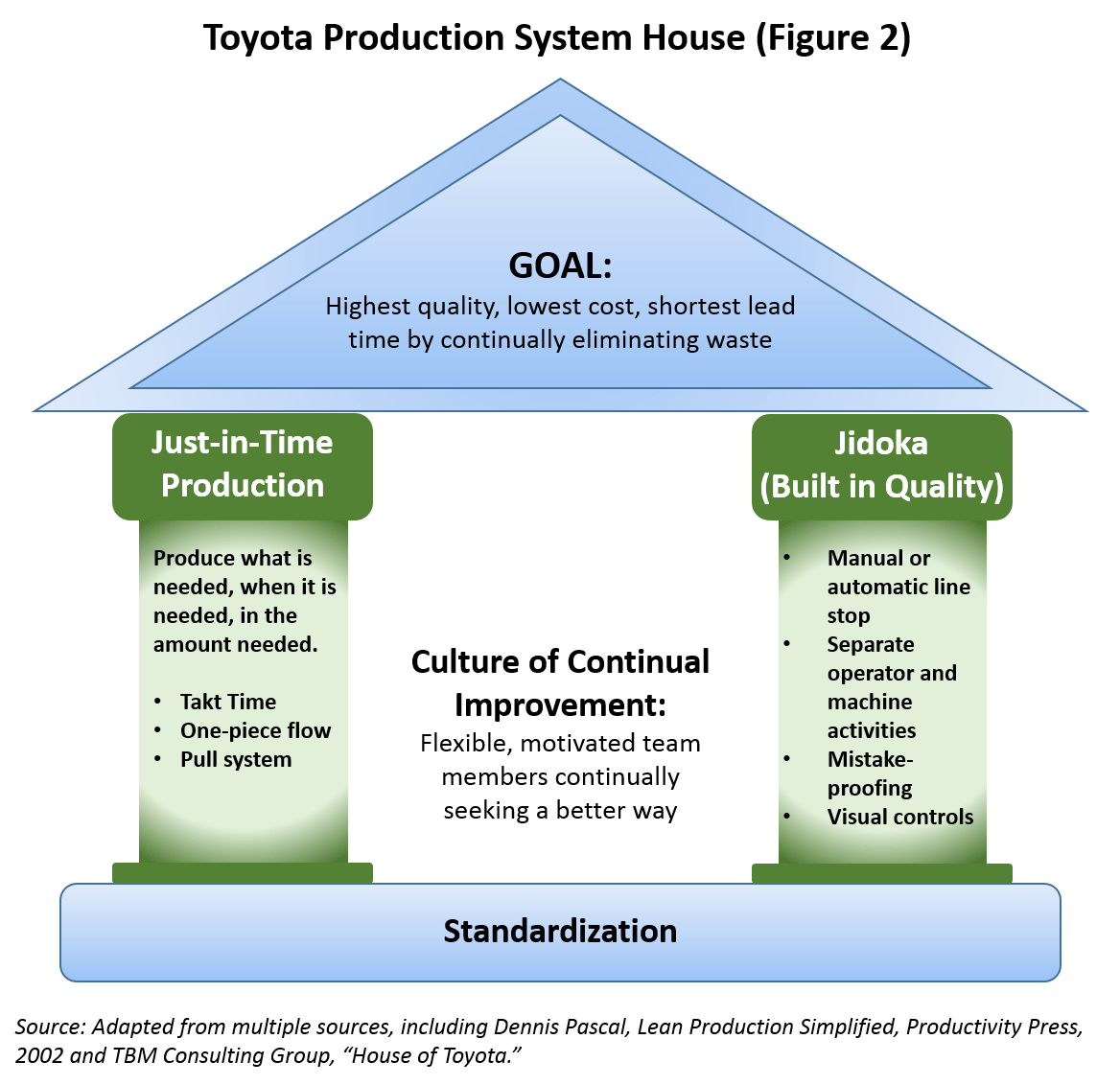
Status of Lean Activity in the United States
In the U.S., Lean implementation began in the 1980s in the automotive and aerospace sectors. Today, numerous companies of all sizes and across multiple sectors are implementing Lean production. According to the 2007 IndustryWeek/Manufacturing Process Improvement Census of Manufacturers, nearly 70 percent of all U.S. plants have adopted Lean manufacturing as an improvement methodology.1
U.S. Sectors Implementing Lean
Examples of U.S. manufacturing sectors where there is significant Lean activity include the following. (Implementation of Lean is not limited to these industries, however.)
- Aerospace
- Appliances
- Automotive
- Banking
- Construction
- Electronics
- Furniture
- Government
- Medical devices
- Shipbuilding & Repair
Although it originated in manufacturing, Lean production has been rapidly expanding to service industries, including healthcare, banking, insurance, and even government agencies. Over the past five years, about 20 state environmental agencies have used Lean methods to improve permitting and other agency processes.
Lean Tools
There are a variety of common methods in the Lean toolbox, many of which are defined in Table 1 and displayed in the “Lean Tactical Tools” diagram in Figure 3. Each of these tactical methods has clearly defined process steps, techniques, and desired outcomes. Most Lean tools are implemented in short bursts of activity that include focused and intensive planning and implementation phases. In this context, there is a strong bias toward implementation, as opposed to prolonged planning. This fits within the continual improvement philosophy that emphasizes making changes to address problems and eliminate waste, tracking performance, and making additional changes to further increase performance.
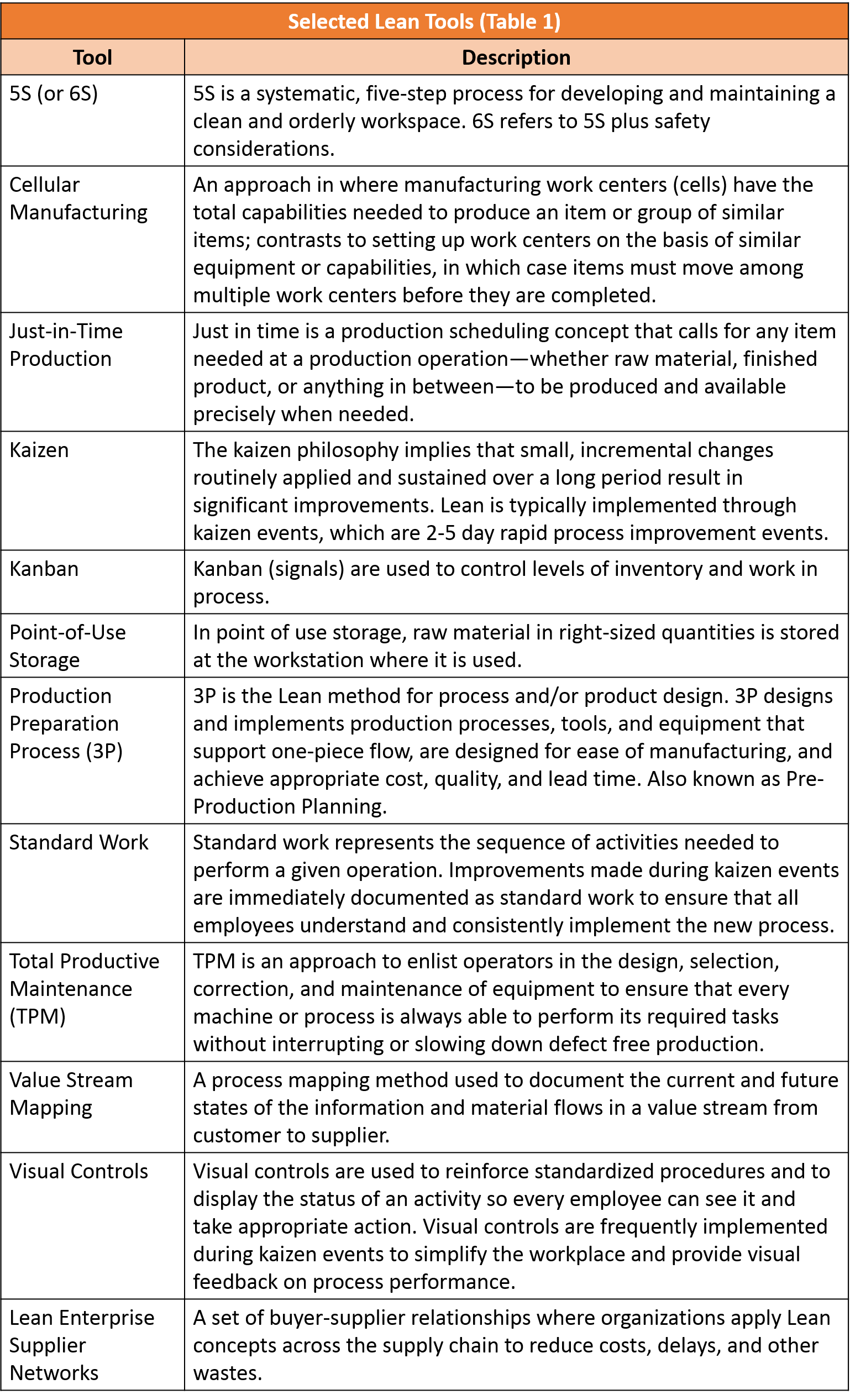
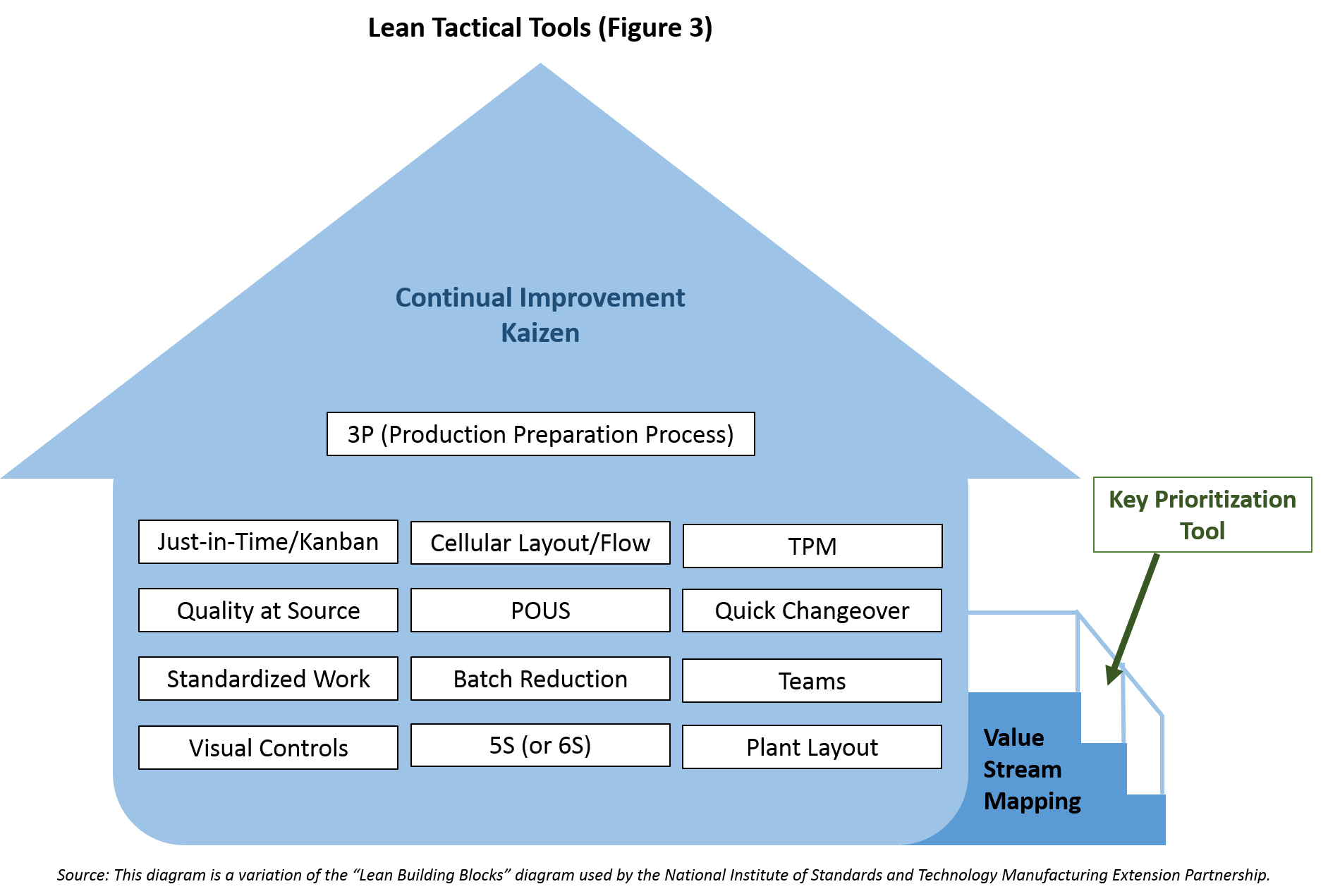
Value Stream Mapping

- Identify major sources of non-value added time in a value stream
- Envision a less wasteful future state
- Develop an implementation plan for future Lean activities
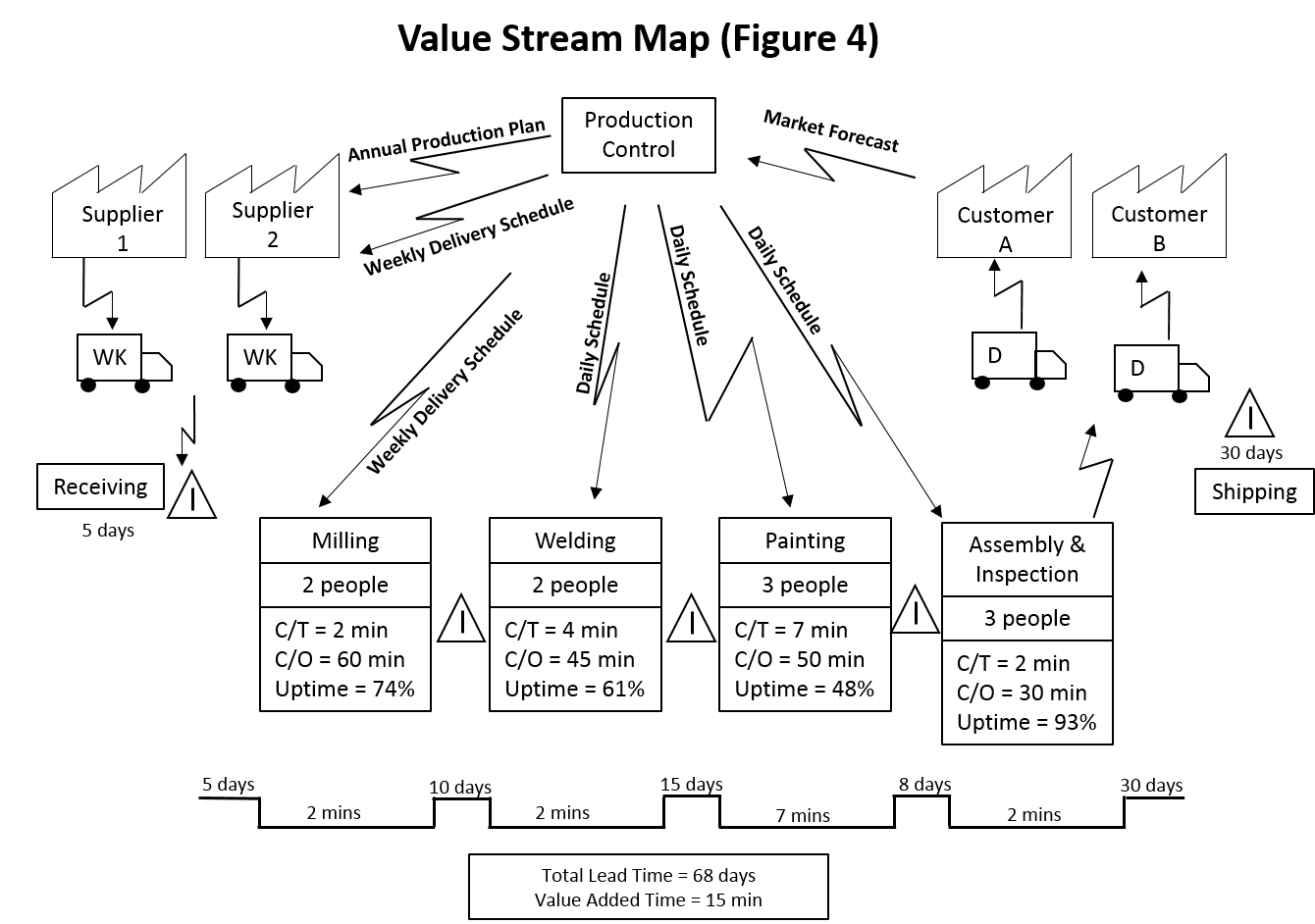

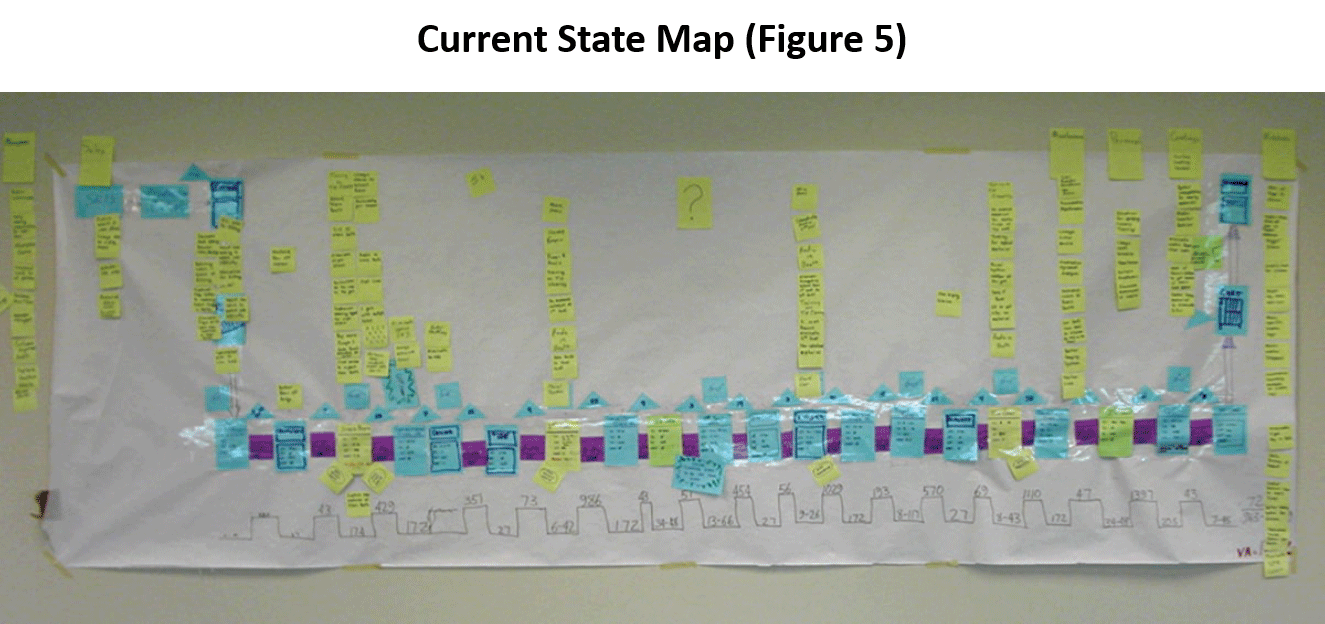

Kaizen Events
Lean production is founded on the idea of kaizen, or continual improvement. Kaizen is a combination of two Japanese words that mean “to take apart” and “to make good.” The kaizen philosophy implies that small, incremental changes routinely applied and sustained over a long period result in significant improvements. Lean is typically implemented through kaizen events, which are 2-5 day rapid process improvement events. Kaizen events are a key method used to foster a culture of continual improvement and waste elimination and are often used to implement other Lean methods. Box 10 provides an overview of kaizen event. Preparation of a value stream map is an important component of kaizen pre-event planning.
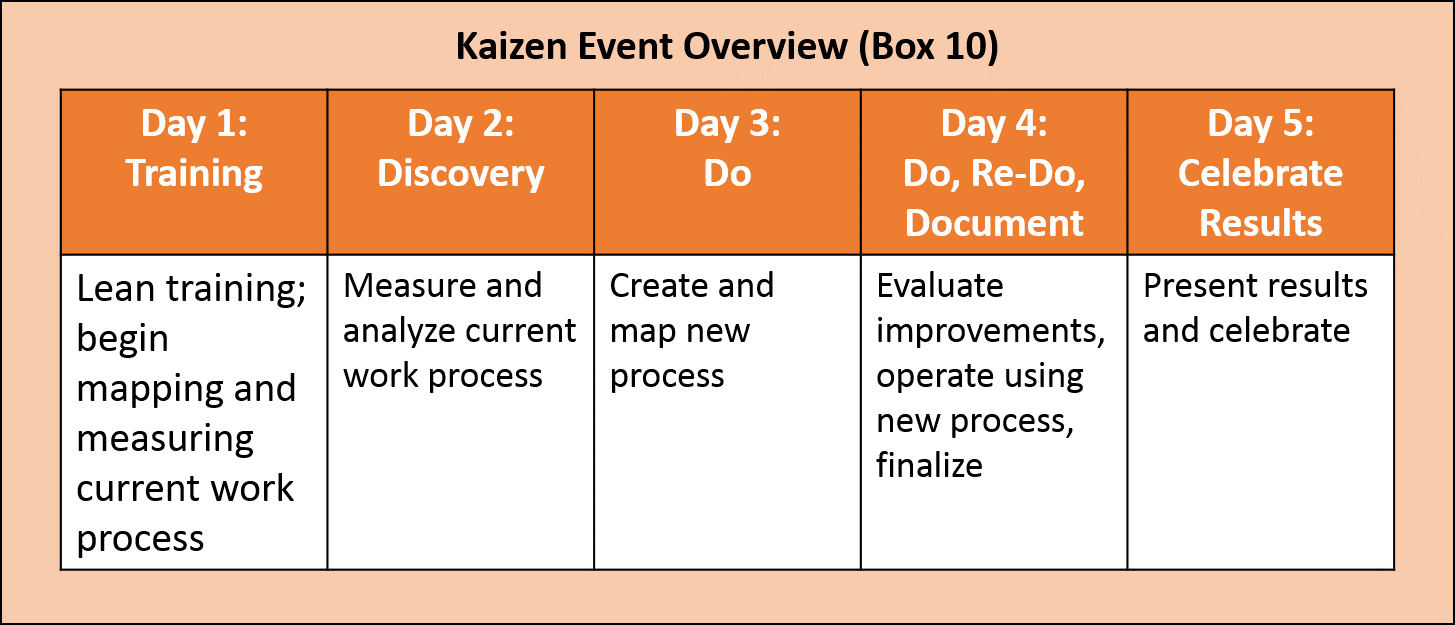
5S
5S is a systematic, five-step process for developing and maintaining a clean and orderly workspace. 5S derives from the belief that, in the daily work of a company, routines that maintain organization and orderliness are essential to a smooth and efficient flow of activities. The 5S pillars help create a productive work environment and create the foundation for implementing more advanced Lean methods such as cellular manufacturing and just-in-time production.
The 5S’s are:
- Sort (Get rid of it): Separate what is needed in the work area from what is not; eliminate the latter.
- Set in order (Organize): Organize what remains in the work area.
- Shine (Clean and solve): Clean and inspect the work area.
- Standardize (Make consistent): Standardize cleaning, inspection, and safety practices.
- Sustain (Keep it up): Make 5S a way of life.
Implementation of this method “cleans up” and organizes the workplace, and it is typically the starting point for shop-floor transformation. A typical 5S project would result in significant reductions in the square footage of space needed for existing operations. It also would result in the organization of tools and materials into labeled and color coded storage locations, as well as “kits” that contain just what is needed to perform a task. Sometimes companies add a 6th “S” for safety (see Figure 6). Figures 7 and 8 are before and after 5S photos.
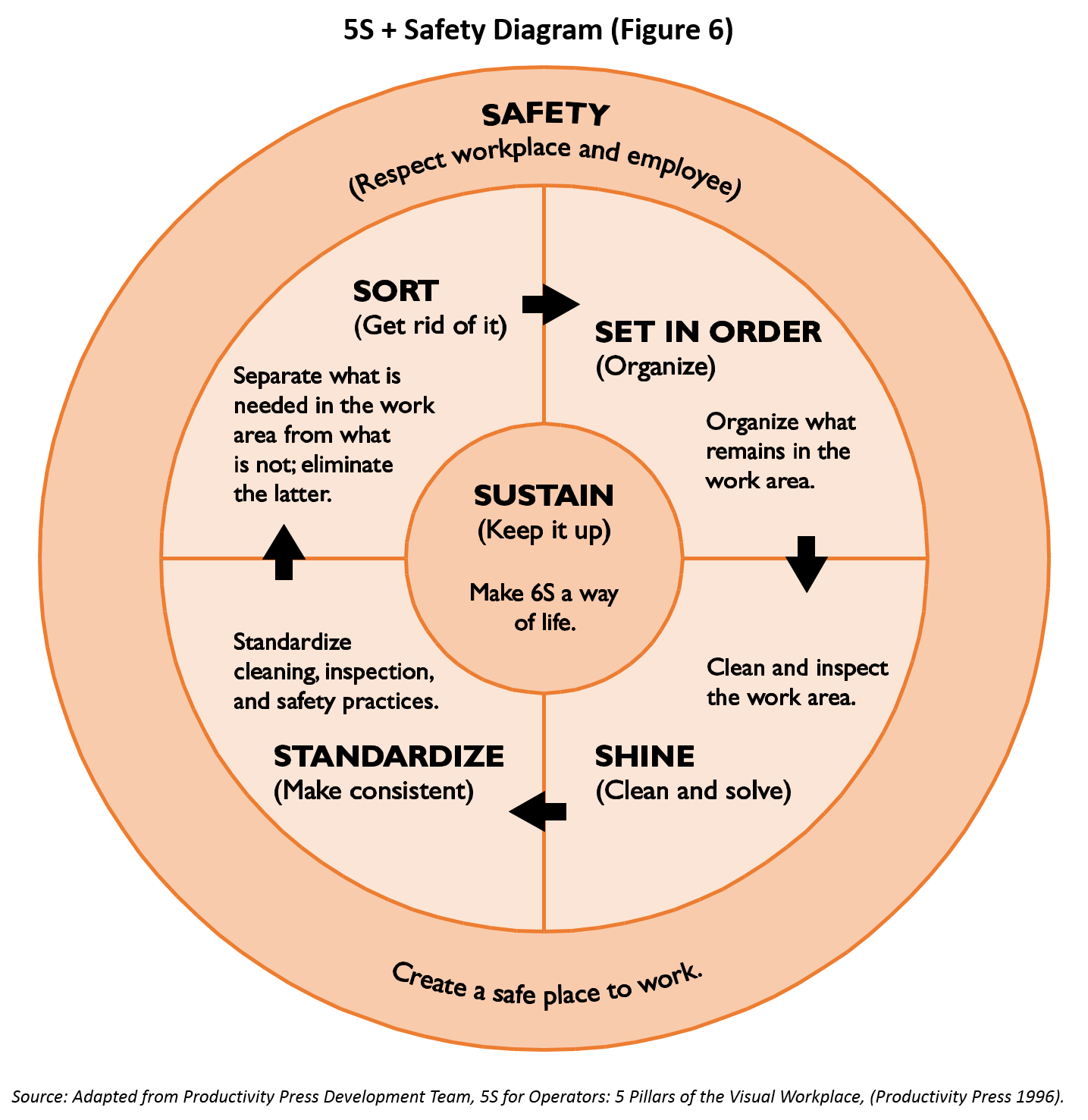
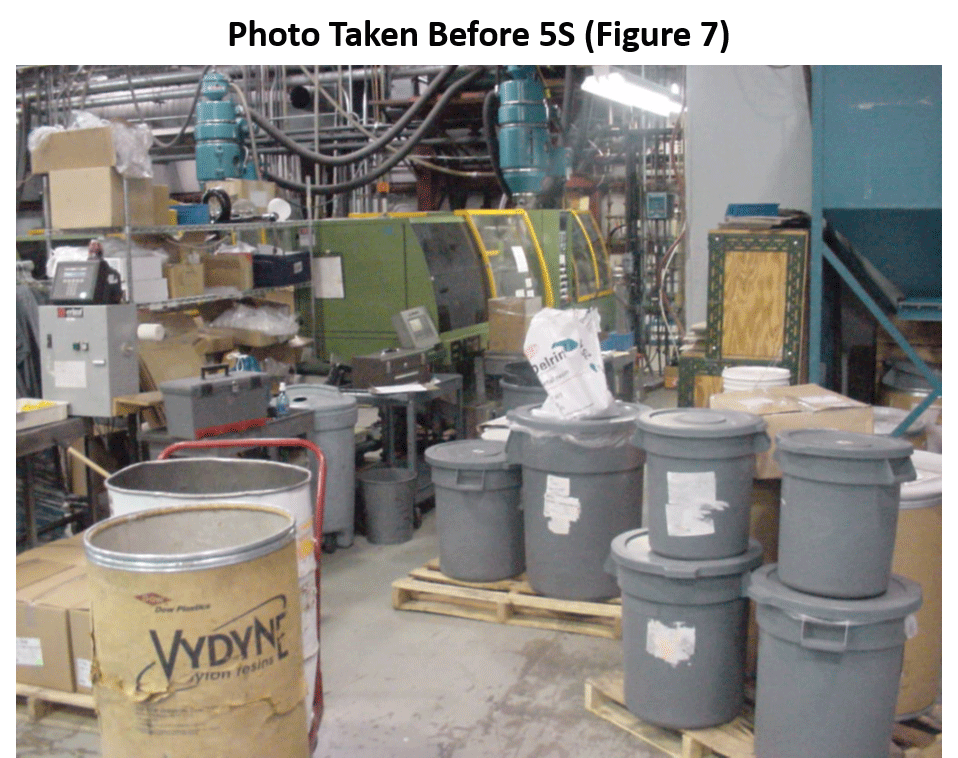
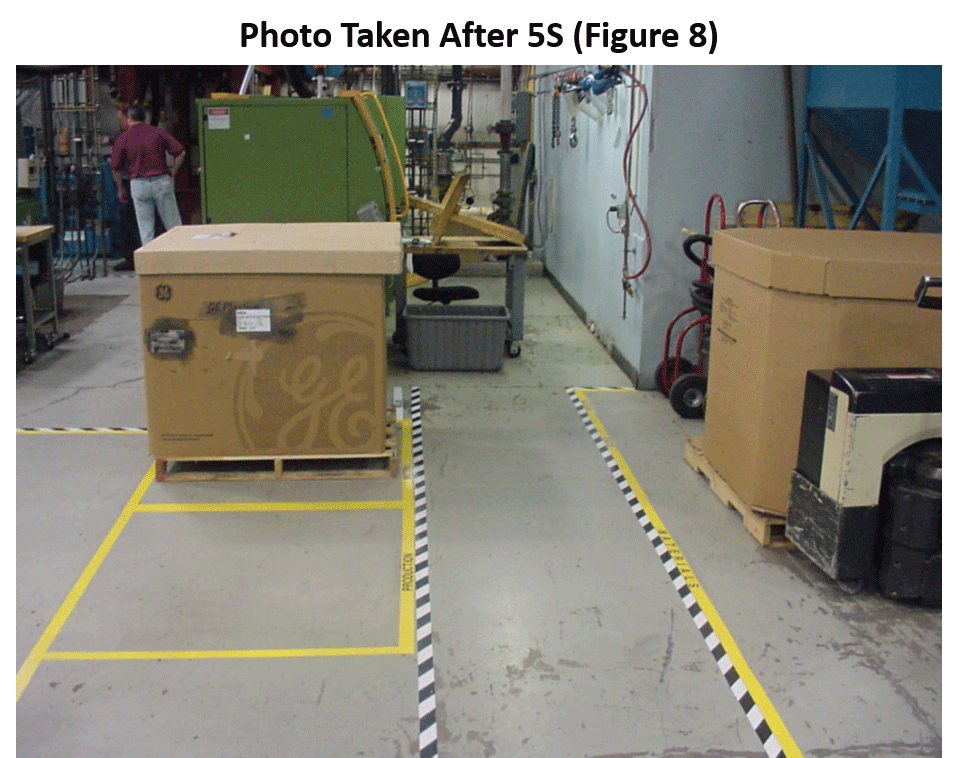
How Lean Factories Differ from Traditional Manufacturing Environments
Traditional U.S. manufacturing facility layouts are set up in what is called a “batch and queue” production systems (see Figure 9). Batch and queue production entails the use of large machines, large production volumes, and long production runs. Each department is designed for one specific purpose and completed products cannot move on to the next functional department until the entire “batch” has been processed. In contrast, cellular manufacturing is a workplace-design approach in which manufacturing work centers (or cells) have the total capabilities needed to produce an item or group of similar items. Figure 10 displays the product-aligned, one-piece flow, “pull” production system that cellular manufacturing systems are based on.
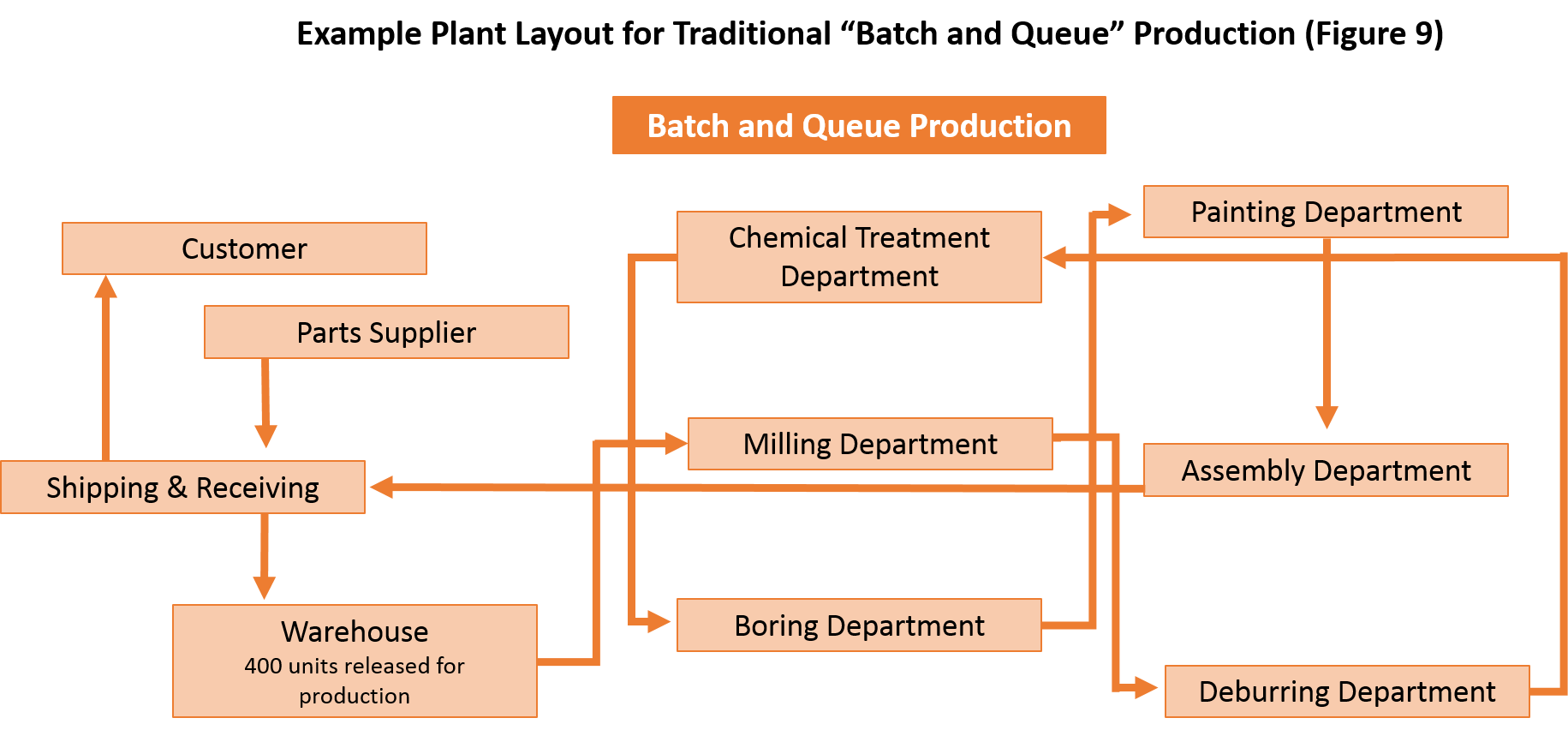
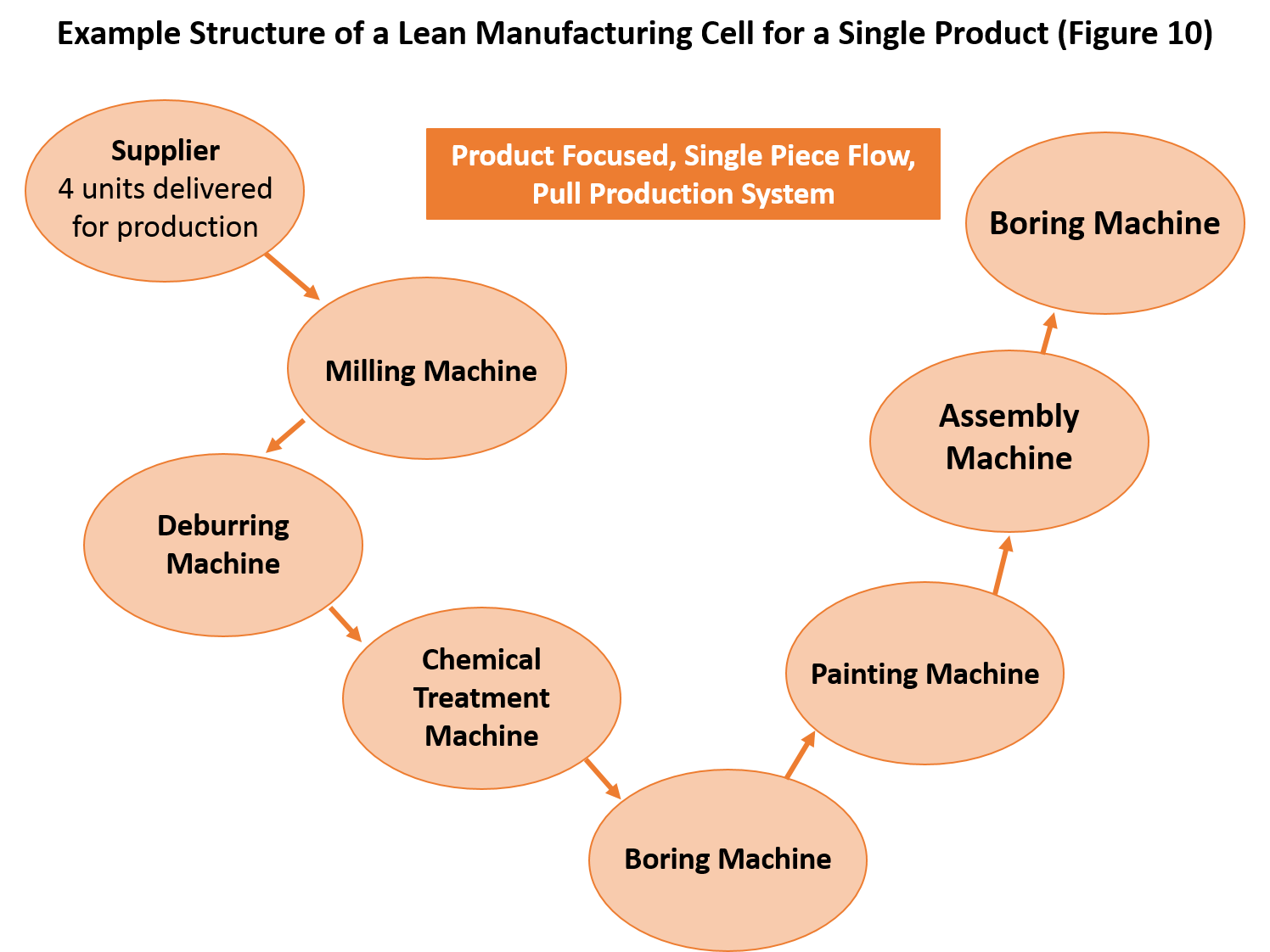
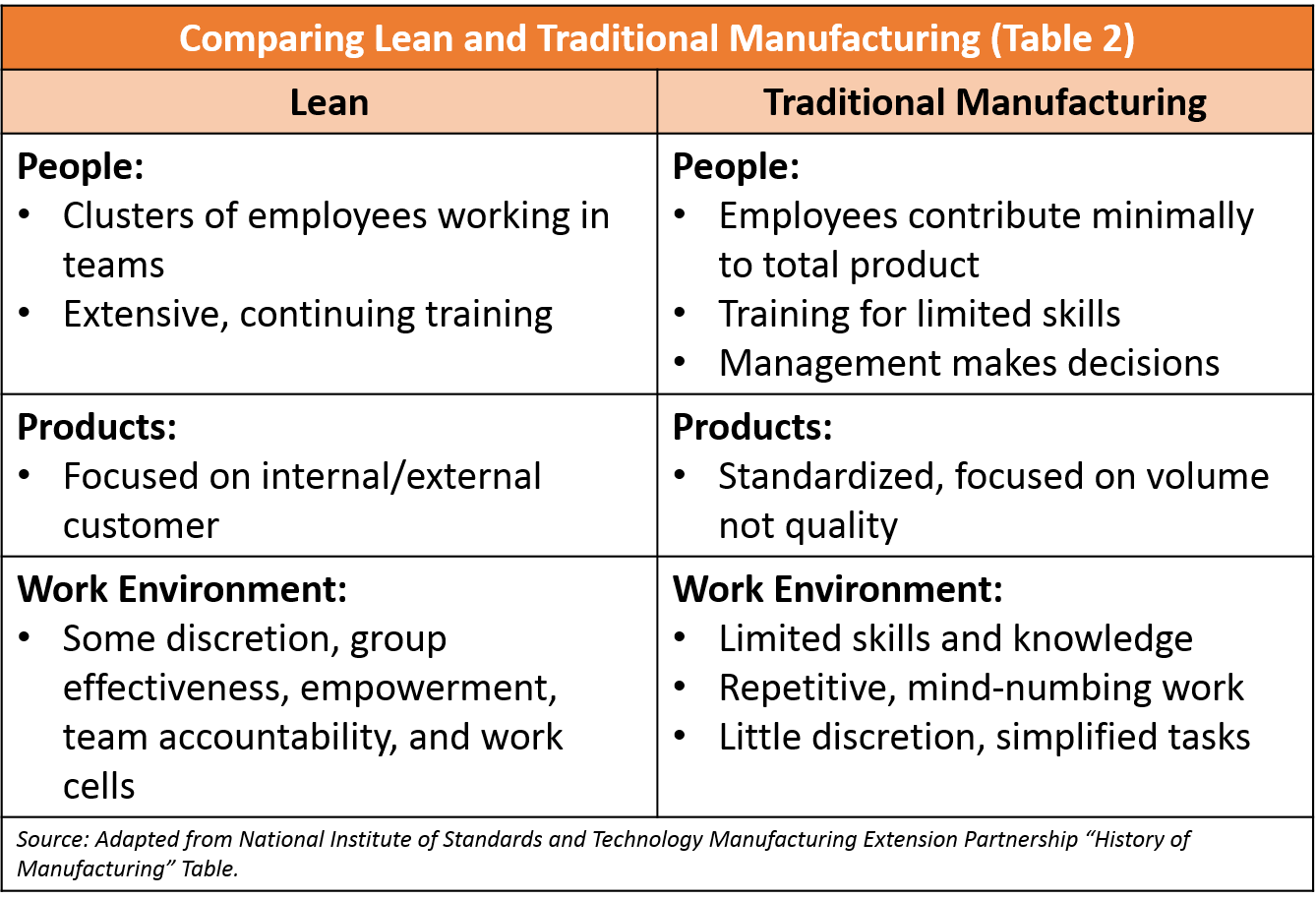
Where to Find More Information on Lean
There are numerous publications, training programs, and websites that provide information on Lean principles and Lean methods. For a list of resources, please see Appendix A, Lean and Six Sigma Resources.
Footnotes
1 Blanchard, David. “Census of U.S. Manufacturers–Lean Green and Low Cost,” IndustryWeek (October 2007).
Toolkit Navigation
- Contents & Acknowledgements
- Executive Summary
- Chapter 1: Why Lean and Six Sigma Are Important to the Environment
- Chapter 2: What Is Lean?
- Chapter 3: What Is Six Sigma?
- Chapter 4: How Do Lean and Six Sigma Relate to the Environment?
- Chapter 5: Why Does It Matter How We Talk About Lean and Environment?
- Chapter 6: Lean and Environment Applications
- Chapter 7: Conclusion
- Appendix A: Lean and Six Sigma Resources
- Appendix B: Lean and Environment Resources
- Appendix C: Lean and Six Sigma Glossary
- Appendix D: Environmental Glossary
- Appendix E: Summary of the Washington Lean and Environment Pilot Projects
